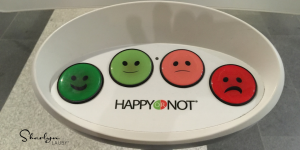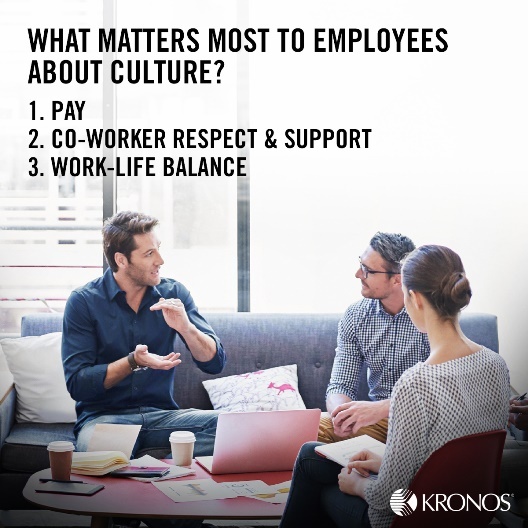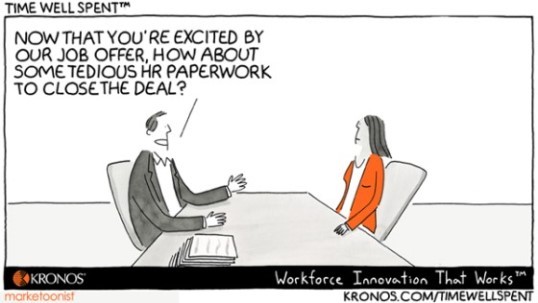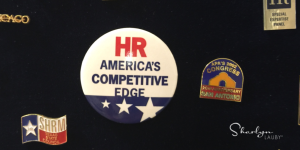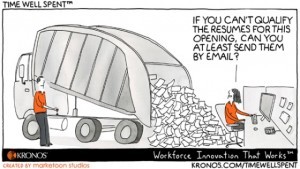Sharlyn J. Lauby's Blog, page 160
March 27, 2016
The Pros and Cons of Multi-Rater Performance Reviews
Multi-rater or 360 reviews gather feedback from multiple sources. Those sources include the employee, manager, co-workers, staff members, and sometimes customers. The idea being that these individuals will provide insights and their collective comments will provide greater feedback for the recipient. Some examples include:
In a traditional performance review from the manager, that’s one person’s point of view. Sometimes an employee will reject the feedback because it comes from just one person. If the same feedback comes from 4 or 5 people, the employee might be more inclined to address it.
Employees can develop reputations for keeping the boss happy but they wreak havoc on their colleagues and team. Same with customers. I’ve worked with managers that the customers adored and the employees abhorred.
The key to using a multi-rater review process is understanding what it can and can’t do. There are some clear advantages and disadvantages.
Advantages of Multi-Rater Reviews
Encourages professional development for the employee and the raters. When I think of multi-rater reviews, I think professional development. This is an opportunity to use feedback at every level of the organization to help an individual develop their talents. It does mean that training should be conducted so the feedback being provided is constructive.
Provides self-awareness from every level of the organization. One of the best things about a multi-rater review is that you receive feedback on several levels – not just your boss. It makes you very aware that being successful isn’t just about making the boss happy. Success is about working with your team, colleagues, and even customers.
Offers anonymous feedback. The fact that the feedback is confidential can be a good thing. It’s possible that something will be revealed that might not surface in a face-to-face setting. It’s also possible that one comment from a single person wouldn’t receive the same consideration. A 360 might surface something that is noticed by several people.
Disadvantages of Multi-Rater Reviews
Use it for the right reasons. One of the biggest mistakes I see with any type of profile or assessment is when it’s used for the wrong purpose – not for which it was designed. I assume the thought process is that “We love ABC profile for this. So let’s use it for that (or everything).” And that would be a mistake.
Understand global laws and nuances. This isn’t really a disadvantage as much as it is a word of caution. Multi-rater reviews are subject to different country laws and best cultural practices. So it would clearly be a disadvantage to the company and the individual if the multi-rater review process was not designed and delivered with a proper global mindset.
Create a culture that makes it comfortable. In most cases, the multi-rater review supplies anonymous feedback. The recipient doesn’t know who said what. This type of arrangement cannot become a mechanism for biting comments. While anonymity can be a good thing, it’s not an excuse for delivering bad feedback.
Multi-rater reviews offer individuals and organizations a unique opportunity for enhanced feedback. To capitalize on the opportunity, the organization must clearly define the objectives, train the raters, and design a process that encourages open discussion.
Image courtesy of Sharlyn Lauby when speaking at the Global HR Change and Transformation Conference in London
The post The Pros and Cons of Multi-Rater Performance Reviews appeared first on hr bartender.






March 25, 2016
Quick Shots for HR and Business Pros – #myRA #Retirement Edition
There’s a well-worn statistic from Pew Research that says roughly 10,000 Boomers will turn of retirement age every day for the next decade. That translates into a lot of people leaving the workforce. We talk about it from a hiring and talent perspective. But what about when employees retire?
Many articles have been published about Boomers not having enough savings for when they retire. In fact, I recently ran across the term “Threshold Generation” to describe individuals nearing retirement who saw their savings disappear, hence being on the threshold of retirement. According to a 2015 Federal Reserve Report, 31 percent of non-retired people said they have no retirement savings or pension whatsoever. Additionally, a 2013 report by the National Institute on Retirement Savings found that the average near-retirement household had only $12,000 in planned savings.
Among workers who do not participate in a 401(k) or other defined contribution plan, 42 percent say it’s because their employer does not offer one. Furthermore, among part-time workers, a 2015 BLS Economic Release found that 62 percent don’t have access to a savings plan at work for when they retire.
If you haven’t already seen this, to address the nation’s retirement savings gap, the U.S. Treasury launched myRA, a retirement savings account for employees who don’t have access to a savings plan at work or have not found an easy way to start saving, such as part-time and seasonal employees.
myRA is designed to remove common barriers to saving, and give people an easy way to get started,” said U.S. Treasury Secretary Jacob J. Lew. “myRA has no fees, no risk of losing money and no minimum balance or contribution requirements. To make saving easier than ever, you can now put savings into myRA directly from your bank account.
I’m not a certified financial planner. So I’m not here to tell anyone how to save and invest their money. But I do know that if individuals are unable to care for themselves financially, it will have an impact on business and our roles as human resources professionals. In fact, I ran across an article recently talking about the possibility of mandatory retirement savings programs being introduced in Congress.
Financial literacy, that includes retirement, needs to be a part of workplace well-being programs. From a business perspective, we want our employees to have satisfying, engaging, productive careers with our organizations. We also want them to have satisfying retirements when the time comes.
Oh, a quick P.S. About a year ago, I started reading . It’s a curated collection of articles about preparing to retire. I’ve found it to be interesting and very diverse in thought. Just in case you want to check it out.
Image courtesy of Sharlyn Lauby while appreciating street art.
The post Quick Shots for HR and Business Pros – #myRA #Retirement Edition appeared first on hr bartender.






March 24, 2016
Corporate Buzzwords Don’t Have To Be Embarrassing
I recently went to an event where speakers apologized after every mention of the word “engagement.” I can’t tell you how many times I heard, “Well, I apologize because I know you’ve heard engagement a lot today.” Or “I apologize for bringing up engagement again.”
Yes, employee engagement has moved into the category of corporate buzzwords. It’s front and center with disrupt, synergy, seat at the table, unicorn, at the end of the day, and scalable. Oh, and let’s not forget purple squirrel. I’m sure there are plenty more. But IMHO, being a buzzword is okay. Especially if we haven’t figured out another word that better represents the concept.
For example, in the case of employee engagement, Blessing White has one of the best definitions for the concept. “It lies at the intersection of maximum contribution for the business and maximum satisfaction for employees. It’s a sustainable level of high performance that benefits both the company and the employee.” Frankly, that’s a great definition. Even for a buzzword.
I completely understand that business professionals can glom onto a word and use it frequently without regard to the consequences. I have my favorite words and phrases too. I’m sure others are sick of me saying (or writing) some of them. Yes, they’re buzzwords. But they communicate something very valid.
Instead of backing away from corporate buzzwords, I would encourage people to use their buzzwords wisely. Use them sincerely and in proper context. Give them the importance they deserve. Because if you apologize every time you use a buzzword, doesn’t that diminish the point you’re trying to make?
Until we find another way to say employee engagement, I think we should all be okay with using employee engagement as the term. Yes, it’s a buzzword. But it’s also a very important concept to our businesses. It’s a buzzword that represents billions in human and financial resources. And we should treat it that way.
Image courtesy of Sharlyn Lauby while strolling the Gaylord Palms Resort in Orlando, Florida
The post Corporate Buzzwords Don’t Have To Be Embarrassing appeared first on hr bartender.






March 22, 2016
Who Owns Your Company Culture
(Editor’s Note: Today’s post is brought to you by our friends at Kronos , the global leader in delivering workforce management solutions in the cloud. To learn more about designing and managing a company culture that drives bottom line success, check out fellow board member and Kronos Chief People Officer David Almeda’s chapter in The Workforce Institute’s latest anthology, It’s All About Bob(bie): Strategies for Winning with Your Employees . Enjoy the post!)
Company culture refers to the shared values, attitudes and beliefs that characterize an organization. It’s a part of the company’s goals, structure, and philosophies about employees and customers. Culture is important.
But do you know who’s accountable for your organization’s culture? According to the new study released by The Workforce Institute at Kronos, opinions differ greatly on company culture: who defines it, what drives it, and how can you change it.
The study is called “Who’s the Boss of Workplace Culture?” and responses were segmented by three groups: 1) human resources professionals, 2) people managers, and 3) non-management employees.
Employees define company culture
There are many different points of view when it comes to who defines organizational culture.
Forty percent (40%) of Millennial employees said that employees define culture.
Thirty-three percent (33%) of HR pros said they define culture, with only 10 percent of managers and 3 percent of employees agreeing.
Twenty-six percent (26%) of managers said the executive team defines culture, while only 11 percent of HR pros and 9 percent of employees felt the same.
Twenty-eight percent (28%) of employees said “no one” defines culture.
I think it’s safe to say that everyone plays a part defining company culture. That’s a good thing. But it also means that organizations have to create “communities” that give each individual a chance to contribute. Employees who do not feel they are a part of the company culture are sure to disengage from it.
What makes a culture?
In the study, employees responded that 1) compensation, 2) respect, and 3) work life balance are the keys to an attractive company culture. Interestingly, only 25 percent of HR pros and 29 percent of managers thought compensation would be in the top three of how employees view culture. A disconnect clearly exits.
However, when asked what kills a culture, HR pros and managers acknowledged “a high stress work environment” was a major concern. A sign that all groups recognize the impact that the work environment can have on culture and the importance of balance at work and home.
Interestingly, groups were also on the same page regarding strategies to strengthening culture. HR pros and managers identified “training and development” as a top strategy (72 percent and 61 percent respectfully.)
Organizations recognize that employee well-being is a key component in healthy company cultures. Well-being efforts support an employee’s career goals, relationships, financial literacy, physical health and community pride. They encourage employees to bring their “whole selves” to work.
Technology is changing culture
Social media and online review sites are changing the culture conversation according to 43 percent of HR pros and 39 percent of managers. Candidates are researching organizations before they choose to apply for jobs. This ultimately has an impact on the talent coming into the organization.
Whether it’s in person or via technology platforms, feedback is the number one ingredient to maintaining a healthy and relevant culture according to 50 percent of HR pros and 41 percent of managers. Organizations should create internal mechanisms that encourage peer-to-peer feedback, informal learning, and recognition as a strategy for building and maintaining a positive workplace culture.
Culture drives business results
Organizational differences about who owns culture is a significant finding. If organizations aren’t on the same page about who owns culture, then how can they maintain it? We do need people to maintain organizational culture. It’s drives our marketing and employment branding, customer and candidate experiences, and much more.
What is company culture and who owns it? The answers may surprise you.
Click To Tweet
More importantly, as fast as the business world is changing, what if we need to tweak our culture? We need to be able to enhance the components of our culture without sacrificing what made the company great.
This is a very interesting question to discuss with senior management and employees. Is everyone on the same page where company culture is concerned? And what are the consequences if they’re not?
The post Who Owns Your Company Culture appeared first on hr bartender.






March 20, 2016
5 Ways to Keep Performance Reviews From Becoming Boring
I wonder sometimes if the reason there are so many complaints about annual performance reviews is because people find them boring. Let’s face it – it’s the same process using the same form. And if the goal is for employees to have consistent performance, that means that managers are discussing the same thing with employees. Every year. Long-term employees have participated in the same process each year for what seems like an eternity.
Don’t get me wrong. I believe in the performance review and its purpose. But maybe it’s time to infuse some new life into the process. Here are some things, if you’re not currently doing them, that can bring a new perspective and value to your performance review process:
Break the longer annual review conversation into smaller discussions. I once worked for a company that had a series of small conversations instead one long performance discussion. The conversations focused on goal setting, performance, career development and progress towards goals. Both the manager and employee knew what the conversation was going to focus on, but it was brief and to the point.
Add a stay interview component. According to the 2015 SHRM/Globoforce Employee Recognition Survey, employee retention and turnover is the number one challenge facing HR professionals today. Companies can include a few questions during the performance review meeting about the reasons an employee enjoys working for the company or the tasks they particularly like about their job. Learn why employees stay so those things don’t change.
Ask employees to do a self-evaluation. Give employees a copy of their last review and ask them to rate their own performance. Managers get time to reflect and prepare to discuss an employee’s performance. The employee should get the same. Doing a self-review can be eye-opening for both the employee and the manager.
Incorporate goal setting. Performance review conversations do not have to be completely focused on the past. This is a great opportunity to talk about company goals and how an employees work aligns with those goals. Ask employees to come prepared to discuss 1-2 goals they would like to accomplish.
Train managers to ask for feedback. I realize the performance review is typically about an employee’s performance but, just because they’re getting feedback doesn’t mean they can’t give some. This is a great time for managers to get feedback about their performance. Ask the question – “How I can support your goals?” Or ask employees to come to the meeting prepared to give one piece of feedback.
Here are 5 ways to keep performance reviews from becoming boring
Click To Tweet
Performance reviews do not have to be stale and boring. Companies do not have to do something radical to make them fresh. Break up the conversations. Add some different components to performance reviews. Train managers (and employees) on getting and receiving feedback. And, when it doubt about what to change, ask employees and managers what they want.
Image taken by Sharlyn Lauby just off the coast of Miami Beach
The post 5 Ways to Keep Performance Reviews From Becoming Boring appeared first on hr bartender.






March 18, 2016
Let’s Make the Hiring Experience Easier – Friday Distraction
(Editor’s Note: Today’s post is brought to you by our friends at Kronos , the global leader in delivering workforce management solutions in the cloud. Tens of thousands of organizations in more than 100 countries – including more than half of the Fortune 1000® – use Kronos to control labor costs, minimize compliance risk, and improve workforce productivity. Enjoy the post!)
I learned a long time ago that the key to a good customer experience is making your product “easy to buy and easy to use.” Customers don’t want to jump through a bunch of hoops to buy stuff. And they want to be able to intuitively use the product.
Years later, with the popularity of social media, I added that it should be “easy to share.” We’ve become accustomed to telling others about our favorite brands. Companies should want us to tell our stories about their products or services. Of course, if you don’t have a good brand…well, let’s save that for another post.
Today’s Time Well Spent from our friends at Kronos reminded me that the same philosophy applies to the hiring experience. Candidates want to be able to easily apply for jobs, get hired without too much aggravation, and share their great experience with others.
The latest reports show the unemployment rate at 4.9 percent. The Society for Human Resource Management reports that quits are at their highest rate since 2008. Candidates are clearly in the driver’s seat. Let me rephrase that…the best candidates are clearly in the driver’s seat.
If your organization is looking for top talent, the hiring experience needs to be candidate-friendly. That means finding a way to turn that tedious paperwork activity into something easier. Yes, it’s true that part of the paperwork process is benefits, which employees clearly want. But that doesn’t mean it has to be painful. Another piece of the process is compliance. Technology solutions are addressing that issue by making paperwork processing consistent, scalable, and customized to organizational needs.
The value of having a positive and hassle-free candidate experience cannot be emphasized enough. Organizations need to address the entire experience, not just one part of the hiring process. Having a great interview process, but then making the candidate spend hours on tedious paperwork sends a mixed message. I wonder how many candidates lose their enthusiasm as a result?
The post Let’s Make the Hiring Experience Easier – Friday Distraction appeared first on hr bartender.






March 17, 2016
Job Interview: Hard Enough Without Playing Tricks on Candidates
Have you seen the article floating around about the CEO of Charles Schwab and a breakfast job interview? Basically, he takes candidates out to breakfast and, on the sly, asks the server to intentionally mess up the candidate’s breakfast order so he can see how they respond. Oh, and he promises to leave a big gratuity for the server.
On one hand, I get it. The CEO wants to see how the candidate handles the situation. Do they get angry and fly off the handle? Or are they timid and just take it? But there’s a problem with the logic:
The way that a candidate handles this situation is not a signal of how they will handle things on the job.
Why? Because it’s a job interview!
First off, we have no idea what “messing up” the breakfast order means. So I’ll try to give the CEO the benefit of doubt. But, I certainly hope that messing up a person’s order doesn’t involve putting something in it that they requested not be included. I’d hate to think that some candidate ended up ill or had an allergic reaction because a CEO thought it would be provocative to mess up someone’s breakfast order.
Next, we can’t minimize the purpose of the meeting. It’s a job interview. The candidate is trying to create a good impression. If the toast is a little burnt, so what…I don’t have to eat it. We can push food around on our plate to give the impression of eating. My sister did it all the time when we were kids when she didn’t want to eat her vegetables. The bottom-line is there are times when it’s appropriate to go to battle. Breakfast interviews are not necessarily one of them.
Lastly, and to me the real takeaway from the CEO’s admission, is this is the culture of the company. A trick about messed up breakfast orders decides whether or not you get the job. Candidates have to ask themselves if that’s the type of company they want to work for. Because if that’s how you get the job, then what activity will you be subjected to in order to keep it? Does this create a culture of distrust?
The CEO is quoted as saying that the purpose of the activity is to recognize that we all make mistakes. The question becomes how people react when others make mistakes. I get it. Great point. Instead of messing around with someone’s breakfast, ask the question: “Tell me about a time when someone on your team made a mistake. What was the mistake and how did you confront the issue with them?”
In today’s job market, the best talent have choices. Organizations need to present an employment brand that candidates want to engage with. That includes making decisions about the recruiting process and the little “tests” candidates are being subjected to. IMHO, taking a candidate out for a meal is totally cool. It’s a great way to relax and get to know someone. Interviews are conversations and having a conversation over a meal makes sense.
Messing up someone’s order to gauge their reaction? Well, you can decide if that sets the tone for an open, honest conversation or the next episode of Punk’d.
Image courtesy of Sharlyn Lauby while enjoying avocado toast at Tom’s Kitchen in London
The post Job Interview: Hard Enough Without Playing Tricks on Candidates appeared first on hr bartender.






March 15, 2016
Everybody Is Not Your Customer (Or Candidate)
Over the past few months, I’ve been talking with startups about their businesses. When I ask them to define their target customer, the responses I get are things like “everyone who needs training” or “everyone who uses the Internet.” I hate to be the contrarian, but everyone is not your customer.
It reminded me of a project I did years ago where I was writing a customer service training program. We conducted some focus groups with employees, managers, and even customers. No one could agree on their targeted audience. They kept trying to define it as “everybody.”
I wonder if organizations feel that, if they identify a target audience, they’re implying that individuals outside of that target group won’t want anything from them. When, in fact, there will always be people outside of your core audience that will have an interest in your product or service. Those customers are perfectly okay with being outside of your target demographic. And businesses should be as well.
During this year’s WordCamp Miami, speaker and entrepreneur Syed Balkhi said it best.
“If your target audience is everyone, you do not have a target audience.”
The reason I’m bringing this up is because it applies to the recruiting process as well. Not every job seeker is your targeted audience. That doesn’t make the job seeker bad or unqualified. It does mean that, when you’re putting together your recruitment marketing strategy, you have to consider your targeted audience and the best way to get their attention. Here are some examples:
Niche job boards. It’s perfectly acceptable to use more than one job board based upon the positions you’re recruiting. Some job boards specialize in catering to certain audiences. For example, there are hospitality job boards. And there are talent acquisition solutions like Findly, that focus on hourly talent.
Mobile recruiting. I’ve mentioned on multiple occasions the stats from Pew Research about the number of people who have mobile phones. The question for organizations is how many of their targeted candidates have mobile devices and are they capturing their interest. That means developing a way for job seekers to use mobile to search and apply for jobs.
Social recruiting. We’ve already established that social media isn’t a fad. But each social network is unique and attracts a unique audience. That’s what makes social media awesome. But it also means that we have to tailor our message to the platform we’re using. The demographics for each platform should be researched.
Talent networks. And we can’t forget passive job seekers. The ones who want to stay in touch with the organization and either 1) wait for an opening that interests them or 2) check the company out for a while to see if they want to apply. Recruitment messaging needs to keep those individuals engaged so that, at the right moment, they do take action and apply.
Everybody is not our ideal customer (or candidate.) Targeting messaging will help us though, to attract our ideal customers and candidates.
Image courtesy of Sharlyn Lauby while at the SHRM Volunteer Leaders’ Summit
The post Everybody Is Not Your Customer (Or Candidate) appeared first on hr bartender.






March 13, 2016
Employees Refuse to Change Behavior – Ask #HR Bartender
I honestly believe getting employees to change their attendance and punctuality behavior is one of the hardest things ever. Today’s reader is having the same challenge.
Showing up late to work is a big issue in our company. We do adjust an employee’s pay accordingly if they’re late and issue warnings. But it doesn’t seem to change their behavior. Any advice?
Here’s the thing. If an employee knows what time they are supposed to be at work and they don’t show up at that time, that’s an attendance issue – for the employee. If an employee is counseled about it and still doesn’t show up at the right time, that’s an accountability issue – for the company.
Any time an organization creates a policy or procedure, they are saying, “This is the way we want you to do it.” They are also implying that there are consequences if you don’t do it that way. The consequences don’t have to be disciplinary. It could take the form of a conversation, having a perk revoked, etc. The idea is, if the employee doesn’t want to suffer those consequences, they will follow the policy.
But if a person doesn’t follow the rules and nothing happens to them, then there is no reason for employees to follow the rules. For example, in the reader’s note, you could assume that adjusting the employee’s pay isn’t significant enough to warrant a change in behavior. It’s probably more of a PITA for the company to make the adjustment. It also sounds like the warnings aren’t significant, because they haven’t changed the behavior.
What we don’t know in this scenario is, if employees accumulate a certain number of warnings will the consequences increase to the point that their position with the company is in jeopardy.
I’ve been in this situation a few times in my career. Especially when the labor market is challenging, like it is becoming. Time to fill an open position is getting longer. Managers are concerned that, if an employee leaves, there will be no one to replace them. Or that they will personally have to assume extra work because it’s taking so long to find good employees. And they’re already stressed out.
So what do they do? They don’t hold employees accountable. They let it slide because they don’t want to deal with the possibility of losing an employee. But sometimes the situation can get out of control.
First what happens is, at some point, frustrations reach a peak. Someone is usually made an example of. It’s messy and ugly. Feelings are hurt all around. And, we won’t even get into any potential lawsuits that might arise.
Next, other employees figure out that they will not be held accountable and start testing the system. True – not every employee is going to this. But we all know there will be employees who will. Without trying to sound melodramatic here, the more employees who test the system…the more impact it has on your company culture (and not in a good way.)
This is why holding people accountable is so important. From the beginning. All the time.
If managers are concerned about the amount of work they will have to deal with if an employee is held accountable for their actions, assure the manager that a plan will be put in place to get the work done. The work can always get done. Priorities can be rearranged. Deadlines can be adjusted.
But at the point in time that managers stop holding employees accountable, well…the game changes. What other policies will employees not be held accountable for? You can see where this is going…
It’s important to recognize when a situation is an accountability issue.
Click To Tweet
I’m really glad that this HR Bartender reader brought up this issue. It’s important to recognize when a situation is an accountability issue. Organizations could spend a tremendous amount of time focused in the wrong direction and not address the root cause of the problem.
Image taken by Sharlyn Lauby while examining the Gainesville 34th Street Graffiti Wall
The post Employees Refuse to Change Behavior – Ask #HR Bartender appeared first on hr bartender.






March 11, 2016
Job Seekers Need Paper and Tech Skills – Friday Distraction
I have a confession to make. I like paper.
I still use a paper planner and I take a paper journal/notebook with me to meetings. (Side note: if you love paper like me, check out the notebooks at Appointed. Gorgeous!) This doesn’t mean I don’t use technology for planning or notes. But I find that there are events where I want paper and others where technology makes more sense.
Anywho, I was at a meeting recently where someone took one look at my paper notebook and told me that “paper was out” and that people, especially young professionals or young job seekers, only use technology instead of paper. Frankly, I’m not sure I agree. Paper seems to be enjoying a resurgence right now with coloring books being all the rage. And over the past quarter when I started shopping for my 2016 planner, I had no clue how many paper planner systems were on the market.
But I also agree that there are times when technology has clearly diminished the need for paper. Resumes is a great example. I’ve seen dozens of articles talking about the death of applicant tracking systems (ATS.) Not sure that I see it. There’s no way HR departments are going back to the days of paper. Today’s Time Well Spent from our friends at Kronos reminded me what the paper resume process used to look like.
The other thing this cartoon reminded me was about the process to “qualify” a resume. There’s a statistic on the Internet that says recruiters spend less than 10 seconds looking at a candidate’s resume. So job seekers need to make a lasting impression in a short period of time. The way to do that is by making sure you use the right tools at the right time.
That might mean being able to sell yourself on paper or using ATS technology in the most effective way. Yes, technology is becoming a big part of our personal and professional lives. But sometimes paper is equally effective. It’s all about context. And you want to be successful at both.
The post Job Seekers Need Paper and Tech Skills – Friday Distraction appeared first on hr bartender.






Sharlyn J. Lauby's Blog
- Sharlyn J. Lauby's profile
- 10 followers


